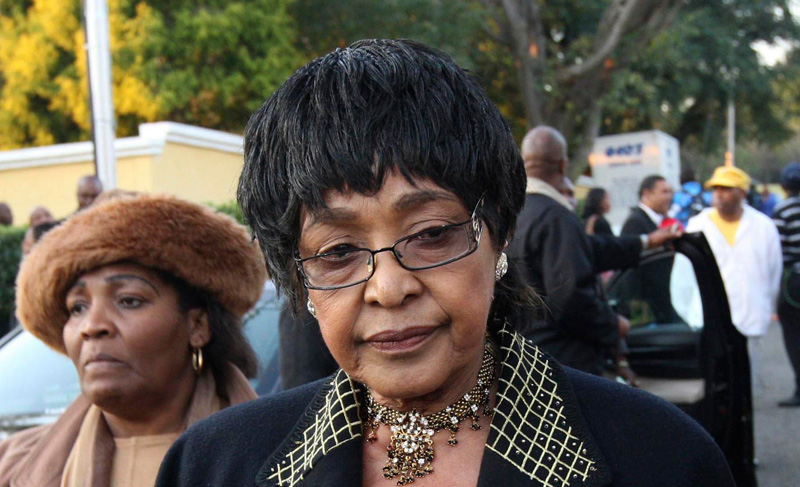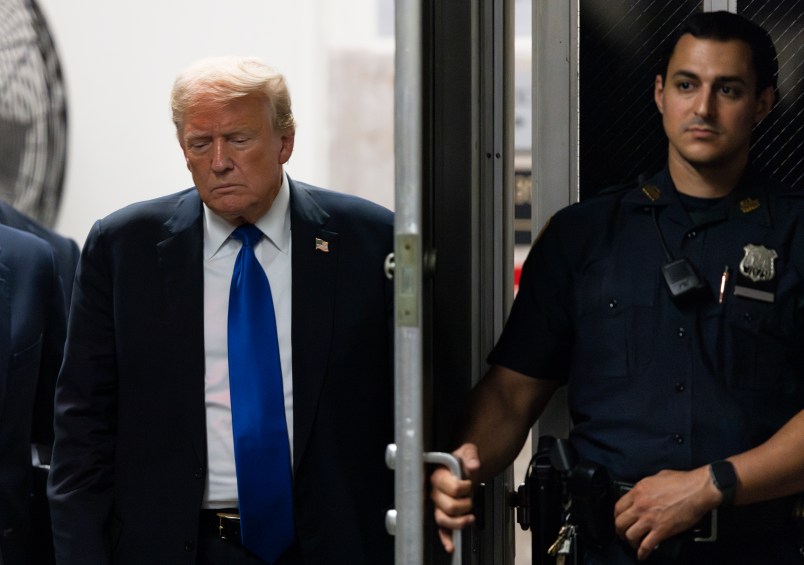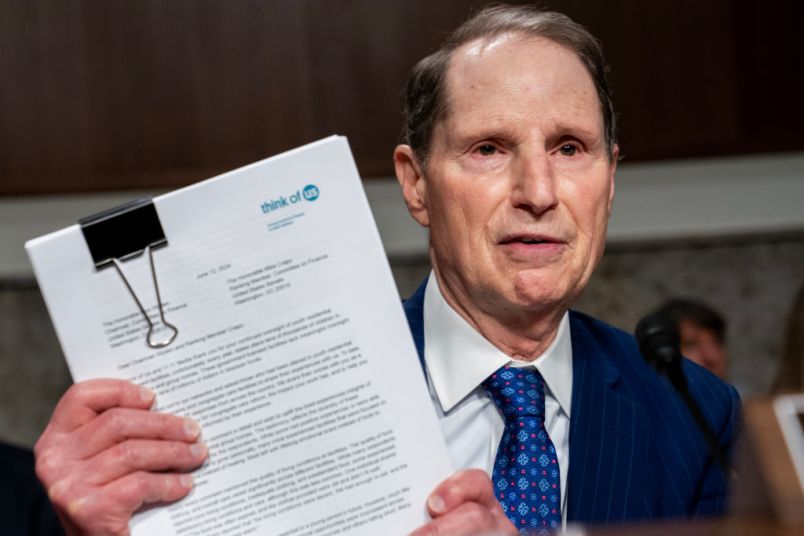JOHANNESBURG (AP) — Forensic scientists on Tuesday exhumed two bodies believed to belong to young activists last seen 24 years ago at the home of Winnie Madikizela-Mandela as police said they have opened a new murder investigation.
The case reopens a dark chapter in the life of the then-wife of Nelson Mandela. Many South Africans still revere the 76-year-old as “the mother of the nation,” but others have feared as a vengeful and heartless operator. She had “the blood of African children on her hands,” her former friend Xoliswa Falati told South Africa’s Truth and Reconciliation Commission.
In the late 1990s, the Truth and Reconciliation Commission found that Madikizela-Mandela was responsible for the disappearances in November 1988 of 21-year-old Lolo Sono and his friend Sibuniso Tshabalala, 19. But nothing was done to pursue allegations she was directly involved in their killings, even though her chief bodyguard Jerry Richardson told the commission he and a colleague stabbed the young men to death on Madikizela-Mandela’s orders.
Mortuary records indicate the two bodies that were unearthed on Tuesday had multiple stab wounds
In front of the Truth and Reconciliation Commission, Madikizela-Mandela denied all knowledge of the two and said allegations she was involved in six other killings were rubbish. Madikizela-Mandela could not be reached for comment.
Richardson was head of the Mandela United Football Club, a crowd of young men who acted as Madikizela-Mandela’s bodyguards and also as vigilantes who, some charge, she used to get rid of enemies.
On Tuesday, the African National Congress party — which Madikizela-Mandela serves as a recently re-elected member of the National Executive Council — orchestrated the ceremony that brought more than 100 family members to watch the uncovering of the skeletal remains believed to belong to Sono and Tshabalala.
Most attendees responded only lukewarmly to traditional ANC slogans, causing one official to urge them to respond with more vigor. Another told them to “make sure everyone knows you are ANC families.”
ANC officials tried to prevent family members, some of whom have accused Madikizela-Mandela of killing their sons, from talking to reporters.
John Sono, uncle of one of the missing men, insisted on speaking, saying “We are getting some relief because we know that we are closing the chapter of ‘we don’t know’ and we are opening the chapter of ‘here lies our son.'”
When a journalist asked if he wanted justice, Sono said, “That one is still very far, we still need to talk about it,” before an ANC official shoved his hand in front of TV microphones saying “No, no he can’t answer that one.”
Piers Pigou, the senior investigator for the Truth and Reconciliation Commission who cross-examined Madikizela-Mandela during its hearings, told The Associated Press that “I think the standard of proof used by the Truth Commission basically established prima facie (enough evidence to prosecute) cases against Mrs. Mandela and members of the Mandela United Football Club, including in the disappearances of Sono and Tshabalala.”
Pigou said he found it particularly distressing to know that the men’s bodies were taken to the mortuary the day after they disappeared, and that police were unable to link them to the two missing men who were being desperately sought by their families.
The commission lambasted police investigations into the disappearances, causing some to wonder whether the incompetence was purposeful. Pigou said there was “a pattern of incredibly incompetent investigations” with an “enormous number of missing dockets.”
“Does it add up to a conspiracy or not that investigations were not being pursued when they could be pursued?” he asked.
This time, the two new murder dockets have been opened by the Hawks, the police priority investigative unit, Capt. Paul Ramaloko told The Associated Press.
He said there had been no investigation since the original case was opened and 1988 and closed soon after. “It’s too early to be saying if we have suspects or not,” Ramaloko, the Hawks spokesman, said, but added they were asking anyone with information about what happened 24 years ago to come forward.
Asked if investigators would be questioning Madikizela-Mandela, he said “At this stage we don’t have an affidavit or statement guiding us to that direction, but should it transpire at a later stage, we would obviously do the right thing … Whoever the investigation identifies as the suspect in this case, we would obviously bring the person forth to answer some questions.”
At the truth commission, Nicodemus Sono, father of one of the missing men, described how Madikizela-Mandela had come to his home with his son held at gunpoint and his face bruised from beatings, in November 1988. Sono said she had demanded photographs and documents, telling the father that his son was a spy for the apartheid police.
Sono had begged her to give him back his son. But he said she had driven away saying “the movement” would decide what to do with him.
Nomsa Tshabalala, mother of the other missing man, accused Madikizela-Mandela of killing her son when she gave testimony to the commission. “I would request Winnie to give Siboniso back to me. I want Siboniso or his bones and remains,” she said. “She knows, deep inside of her, she knows . I’d like to find out as the where my son has been buried.”
On Tuesday, she stood with a stern face at the grave site at Avalon Cemetery as scientists wielding miniature trowels and paint brushes delicately uncovered a skeleton caked in red clay.
Madeleine Fullard, head of the missing persons department of the National Prosecuting Authority, cautioned the families that DNA tests must be done and it could be months before a definitive identification is made. Family members already have submitted DNA samples.
Fullard said her team stumbled on mortuary records a year ago that led to Tuesday’s exhumation. An anthropologist in search of other records came across a document indicating the bodies of two young men with multiple stab wounds had been found lying in a field the day after the young men had disappeared. Those bodies had been buried in a paupers’ grave with others at Avalon.
The scientists then searched through “hundreds, hundreds and more hundreds” of dusty archived dockets before they found the photographs of the bodies found in the field. All bodies brought to mortuaries are routinely photographed.
When they took the photos to the families and the young men were identified, everyone cried, including the scientists, Fullard said.
In 1991, Madikizela-Mandela was sentenced to six years’ jail for kidnapping and assault in the death of 14-year-old James Seipei “Stompie” Moeketsi, who also had last been seen at her home and who was beaten to death. She appealed, the assault conviction was overturned and the sentence reduced to a suspended jail term.
Madikizela-Mandela could not immediately be reached for comment. She had been openly contemptuous of the Truth and Reconciliation Commission where she made an appearance 15 years ago. She has said that the commission headed by Nobel laureate Archbishop Desmond Tutu had wrongfully sacrificed justice for reconciliation. She said Tutu never once asked her about all the years of torture, assault, death threats, banishment and 18 months of solitary confinement that she suffered while her husband was imprisoned and she became a leading symbol of the struggle in South Africa.
Tutu had begged her for the truth. “If you are able to bring yourself to say something went wrong, I beg you, I beg you, I beg you,” he said. “You are a great person and you don’t know how your greatness would be enhanced if you were to say: ‘Sorry, things went wrong. Forgive me.'”
The commission noted her contempt “not only for the commission but for the notion of accountability.” She had been incensed that the commission treated victims and perpetrators of apartheid equally.
“They have a nerve to suggest that freedom fighters who fought for freedom must account for their actions while the perpetrators of the worst atrocities are walking the streets laughing at the efforts of our struggle,” she said at the time.
The final report said: “The commission finds that those who opposed Mrs. Madikizela-Mandela and the Mandela United Football Club, or dissented from them, were branded as informers, and killed. … The commission finds further that Mrs. Madikizela-Mandela herself was responsible for committing such gross violations of human rights.”
Madikizela-Mandela was separated from Mandela in 1992, two years after he was released from 27 years of incarceration. Their divorce was finalized in 1996. In 1994 he was elected president of South Africa, with the all-race vote marking the final blow to apartheid, the cruel system of white rule.










